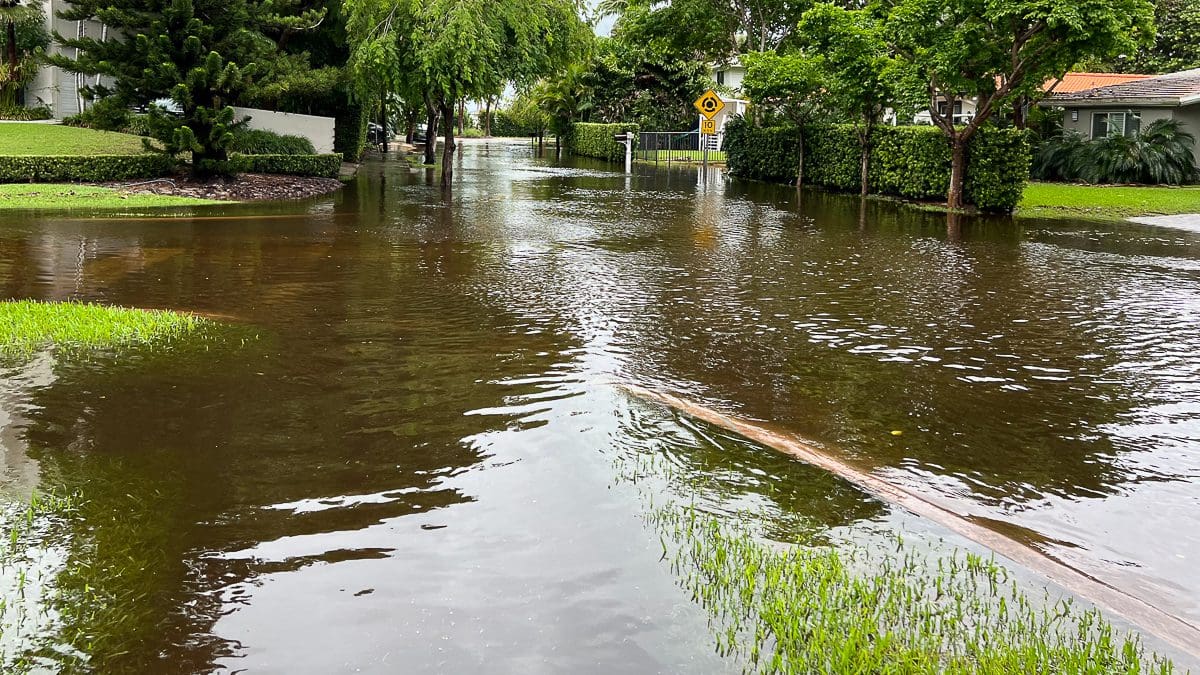The Key Biscayne Village Council gave the go-ahead Tuesday to start designing the first phase of its new stormwater system – but council members still could not decide on how much flood protection the system should provide.
After workshops, public forums and seemingly endless amounts of engineering modeling over the last two years – the Council again could not come up with a consensus on whether to accept the recommendation of its engineers to build a system that anticipates stronger and more frequent storms driven by climate change.
Council Member Brett Moss insisted another workshop be held to discuss whether the Village should accept the staff-recommended system that removes 2-inches of water per hour — or opt for a less expensive system.
Mayor Joe Rasco, who appeared to have the votes to approve the recommended system, agreed to kick the can down the road one more time as long as the Village’s engineering firm – AECOM – can move ahead with preliminary designs.
The result? The Council unanimously approved a $4.1 million work order for AECOM to complete the design for the neighborhood around the K-8 school. But, the council imposed a restriction: the firm is not to design items relating to pump size, force mains and outfalls until the Council makes a decision on price and capacity.
That decision is now expected in March.
The recommended system would remove 2 inches of water per hour and would have a net taxpayer cost of $42.5 million for the K-8 area. If adopted Village-wide, the estimate currently stands at $248 million.
But raising his voice, Rasco warned voters would never forget if the Council goes with a less expensive option and their streets are still flooded.
“If at the end of the day, this project fails, and we do not take care of our stormwater, nobody is going to be able to have the political will to be able to go back to the voters and say, ‘Oh, we have a couple more zones that we’d like you to look at,” he said.
The stormwater system is part of an infrastructure plan that is the most ambitious in the Village’s history. It will be funded by a combination of borrowing, including a portion of the $100 million GO bond measure approved by voters in 2020 as well as higher stormwater fees.
The project – with a gross cost of $330 million – also includes burying utilities and improving and raising some roads. The Village also is working to fortify the coastline in a partnership largely funded by the U.S. Army Corps of Engineers and the County. The Village will be required to make a contribution to the shoreline projects, but the amount remains unknown because it is still under study.
The debate of the evening, however, remained focused on the level of inundation the stormwater system should protect against. Council Member Brett Moss showed a chart he made displaying different “levels of service“– including one that removes water at only 0.5 inch per hour.
“If the storms get more, we’re not going to be able to adapt to it,” he said. “But we’re just going to have to live with a little bit more water in the street for a little bit longer time. And we’re not talking about a massive amount of hours here.”
Council Member Ed London seized on Moss’ idea of another workshop, apparently not happy with the one on Jan. 10 where Village Manager Steve Williamson presented a revised system that cut costs.
“We as individuals have been spoon fed from both Steve and staff,” said London, who has repeatedly suggested considering a system that removes just 1 inch of water per hour. Engineers warned such a system would leave the village underprotected if climate change is as intense as predicted. And, they said, the Village would be stuck with undersized pipes.
Chief Resilience Officer Roland Samimy told the Council the Village could have buyer’s remorse. “Now 10 years down the road, you’ve put stuff in the ground that has a 40-year design life, and is already inadequate and you’re still paying off the debt,” he said.
Vice Mayor Allison McCormick and Council Members Fernando Vazquez and Frank Caplan made remarks in favor of the recommended system.
Besides stronger storms due to global warming, sea level rise is predicted to hinder the capacity of the island to soak up those big rains – meaning rainwater will more quickly run off.
“It’s like when it rains on a lake,” said Vazquez, the only environmental engineer by trade on the dais.
Caplan said it was imperative to get the underground infrastructure right with the threat of climate change. “The empirical data suggests it is going to get worse. The anecdotal data suggests that it already is worse,” he said.
McCormick seemed exasperated, saying her concern with the less expensive option was spending tens of millions of dollars “on a system that is inadequate and we can’t fix.”
Invest in Local News for Your Town. Your Gift is tax-deductible
JOHN PACENTI is the executive editor of the Key Biscayne Independent. John has worked for The Associated Press, the Palm Beach Post, Daily Business Review, and WPTV-TV.



